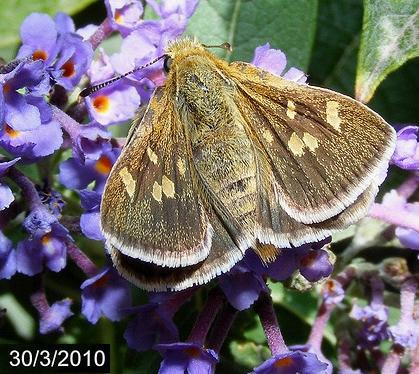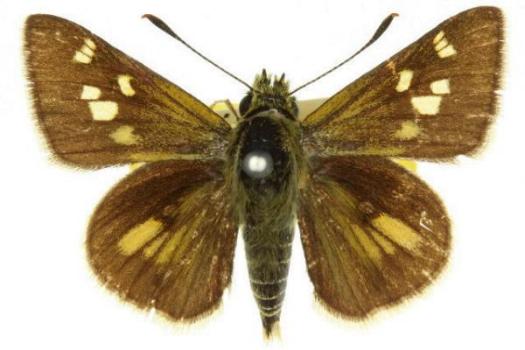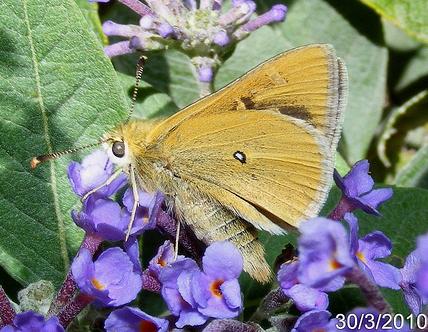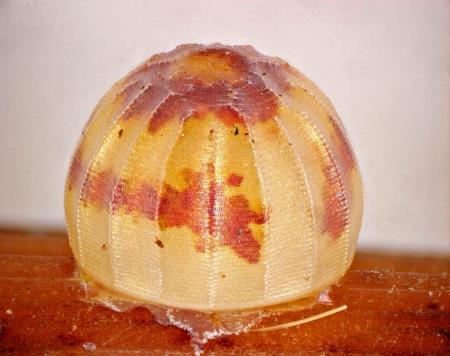
| Yellow Ochre (also known as Trapezites lutea) TRAPEZITINAE, HESPERIIDAE, HESPERIOIDEA | (donherbisonevans@yahoo.com) and Stella Crossley |

(Photo: courtesy of
Jenny Holmes, Great Western, Victoria )

| Yellow Ochre (also known as Trapezites lutea) TRAPEZITINAE, HESPERIIDAE, HESPERIOIDEA | (donherbisonevans@yahoo.com) and Stella Crossley |

(Photo: courtesy of
Jenny Holmes, Great Western, Victoria )
This Caterpillar is greenish or pinkish grey, with dark dorsal and dorsolateral lines. The head is brown with a black stripe down the middle and down each side. It lives in a shelter formed by leaves loosely joined together with silk. It feeds on various species of Mat-Rush (ASPARAGACEAE):
Before pupating it goes for a walkabout for several days, and then pupates in a shelter of leaves joined with silk.

The adult butterfly is dark brown with a series of white and yellow patches on each fore wing. The hind wings each have an indistinct yellow patch. Underneath, the they are orange, with the same white spots as on the upper surface, but with a large rounded triangular dark brown patch under each fore wing, and one or more small white spots under each hind wing. The wing span is about 3 cms.

The species is thought to occur as three main subspecies :
variously in

The eggs are dome shaped with minute ribs, with a diameter of about 1 mm. The eggs are initially white, turning pink as hatching approaches. They are laid singly on a leaf of a foodplant.
Further reading :
Michael F. Braby,
Butterflies of Australia,
CSIRO Publishing, Melbourne 2000, vol. 1, pp 99-100.
Johann Gottlieb Otto Tepper,
The Papilionidae of South Australia,
Transactions of the Royal Society of South Australia,
Volume 4 (1882), p. 33, and also
Plate 2, fig. 6.
Gustavus Athol Waterhouse,
Australian Hesperiidae. VIII. Descriptions of new forms,
Proceedings of the Linnean Society of New South Wales,
Volume 63 (1938), p. 451.
Gustavus Athol Waterhouse, & George Lyell,
The Butterflies of Australia,
Angus & Robertson, Sydney, 1914, p. 177, figs 661, 739.
 caterpillar |  butterflies |  Lepidoptera |  moths |  caterpillar |
(updated 6 July 2010, 3 April 2025)